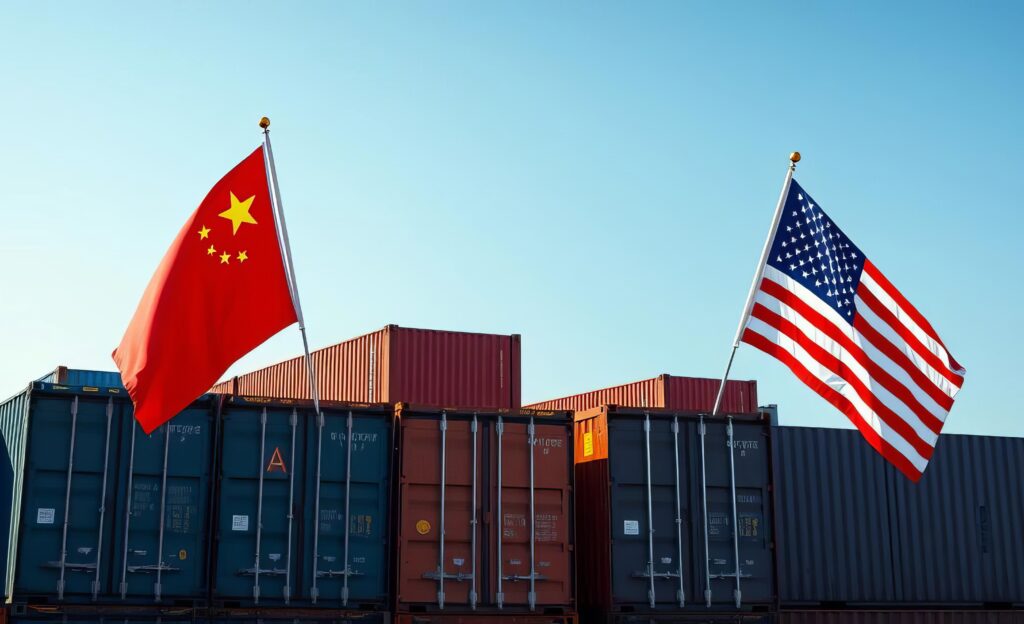Nearshore News: Steel and Aluminum Tariffs Double, China’s Manufacturing Slows, and the Push for Smarter Manufacturing

As of today, U.S. tariffs on steel and aluminum have officially doubled, intensifying pressure on global supply chains and prompting fresh backlash from trade partners. In China, manufacturing is already showing signs of strain, with factory activity contracting for the first time in months. But while tariffs and volatility dominate headlines, manufacturers are looking inward, betting on AI and machine learning to drive smarter, more resilient operations. At the same time, a new push for data standardization is emerging to ease mounting compliance burdens across supply chains
Nearshore News Summary:
- U.S. tariffs on steel and aluminum imports doubled to 50% just after midnight Eastern time today, Wednesday, June 4. (NYT)
- China’s factory activity contracted in May for the first time in eight months, signaling that U.S. tariffs are beginning to hit the country’s manufacturing sector. (Reuters)
- According to Rock Automation’s State of Smart Manufacturing Report, which surveys over 1,500 manufacturers across 17 countries, 95% of manufacturers have invested in, or plan to invest in, AI/ML over the next five years. (Business Wire)
- TrusTrace has launched a new framework to standardize data collection, reduce inefficiencies, and ease the compliance burden across the fashion industry. The initiative responds to growing concerns from suppliers overwhelmed by fragmented and repetitive data requests.(Vogue Business)
Higher Tariffs on Steel and Aluminum Imports Go Into Effect
Published: June 4, 2025
Source: NYT
President Trump has doubled tariffs on steel and aluminum imports to 50%, citing national security and the need to counter low-cost foreign metals that undercut U.S. producers. While supported by domestic steelmakers, the move has sparked backlash from trade partners like Canada and from industries that rely on affordable metals.
Key points:
- Tariffs Rise to 50%: The new tariffs, up from 25%, aim to protect American steel and aluminum industries by deterring low-priced imports, especially from countries like China, Canada, and South Korea.
- Support from U.S. Producers, Concern from Buyers: Industry leaders like the American Iron and Steel Institute praised the move, while manufacturers warn it will raise costs for goods like cars, canned foods, and infrastructure materials.
- Trade Allies Push Back: Canada, the top foreign supplier of both metals, says the tariffs could devastate cross-border supply chains. The Canadian aluminum industry may shift focus to Europe in response.
- Broader Economic Impact Feared: Economists caution the tariffs could hurt U.S. manufacturing more broadly by raising input costs, potentially slowing efforts in oil drilling, homebuilding, and clean tech.
- National Security Justification Under Scrutiny: The U.S. maintains the tariffs are a matter of national security, but critics argue the real issue is overcapacity abroad, especially from China, which distorts global pricing even if it doesn’t export directly to the U.S.
China's factory activity cools in May as US tariffs hit
Published: June 3, 2025
Source: Reuters
China’s factory activity contracted in May for the first time in eight months, signaling that U.S. tariffs are beginning to hit the country’s manufacturing sector. The Caixin/S&P Global manufacturing PMI dropped to its lowest level in nearly three years, as export orders and production declined sharply.
Key points:
- Manufacturing contracts for first time since Sept. 2024: The Caixin/S&P Global PMI fell to 48.3 in May, below the 50 mark that separates growth from contraction and marking the lowest reading in 32 months.
- Export orders hit hard by U.S. tariffs: New export orders declined at the fastest pace since July 2023, with producers citing weakening global demand due to recently reinstated U.S. tariffs.
- Factory output and jobs both decline: Output contracted for the first time since October 2023, while manufacturing employment dropped at the sharpest pace so far this year.
- Rising logistics costs push up export prices: Despite six consecutive months of falling output prices, export prices rose for the first time in nine months due to increased logistics costs and tariffs.
- Mixed outlook with slight uptick in optimism: While current indicators weakened, some manufacturers remain hopeful that trade conditions and market demand will improve in the near future.
Ninety-Five Percent of Manufacturers Are Investing in AI to Navigate Uncertainty and Accelerate Smart Manufacturing
Published: June 3, 2025
Source: Business Wire
According to Rockwell Automation’s 10th annual State of Smart Manufacturing Report, 95% of manufacturers globally are investing in AI and smart technologies to stay competitive amid economic and operational uncertainty. With over 1,500 manufacturers surveyed across 17 countries, the report shows a shift from experimentation to practical implementation, highlighting the convergence of people and technology as essential for industrial resilience.
Key points:
- AI Adoption Is Near-Universal: 95% of surveyed manufacturers have invested in or plan to invest in AI/ML by 2030, especially for quality control, which remains the top use case for the second year in a row.
- Smart Tech Is Accelerating Digital Transformation: 81% of surveyed companies say internal and external pressures are pushing them to adopt smart manufacturing technologies like cloud/SaaS, cybersecurity, and quality management systems.
- AI Matures Beyond Experimentation: Investment in generative and causal AI is up 12% year-over-year, signaling a more strategic, results-driven approach to advanced technologies.
- Cybersecurity Gets Smarter: Nearly half of the surveyed manufacturers plan to use AI for cybersecurity in 2025—up from 40% in 2024—making it the second-highest external risk priority.
- Workforce Transformation Is Underway: 48% of surveyed companies plan to repurpose or hire new workers due to smart manufacturing, while 41% are using AI/automation to close skill gaps and address labor shortages.
Suppliers are drowning in data requests — what’s the fix?
Published: June 4, 2025
Source: Vogue Business
As supply chain regulations grow more complex, suppliers are overwhelmed by fragmented and duplicative data requests from brands. TrusTrace’s new playbook, The Data Advantage, introduces a framework called the Compliance Canvas, designed to standardize data collection, reduce inefficiencies, and encourage collaboration between brands, suppliers, and policymakers to ease the compliance burden and improve traceability across the fashion industry.
Key points:
- Suppliers Overwhelmed by Data Requests: Suppliers face rising pressure to deliver similar compliance data in multiple formats, often under tight deadlines and at their own cost—causing delays and burnout across the supply chain.
- Regulations Are Fragmented and Inconsistent: From the EU Deforestation Regulation to the Uyghur Forced Labour Act, compliance demands vary widely, creating confusion and inefficiency for both brands and suppliers.
- TrusTrace’s Compliance Canvas Offers a Fix: The new framework maps data needs across 16 major regulations, consolidating overlapping requirements to support proactive and efficient data collection.
- Brands Lack Unified Systems Too: Despite sustainability pledges, many brands struggle to track compliance beyond Tier 1 suppliers due to missing data and internal silos.
- Call for Standardization and Pre-Competitive Collaboration: TrusTrace urges the industry and policymakers to align on data standards—comparing the potential to global banking systems where uniformity has already been achieved.
More blogs


